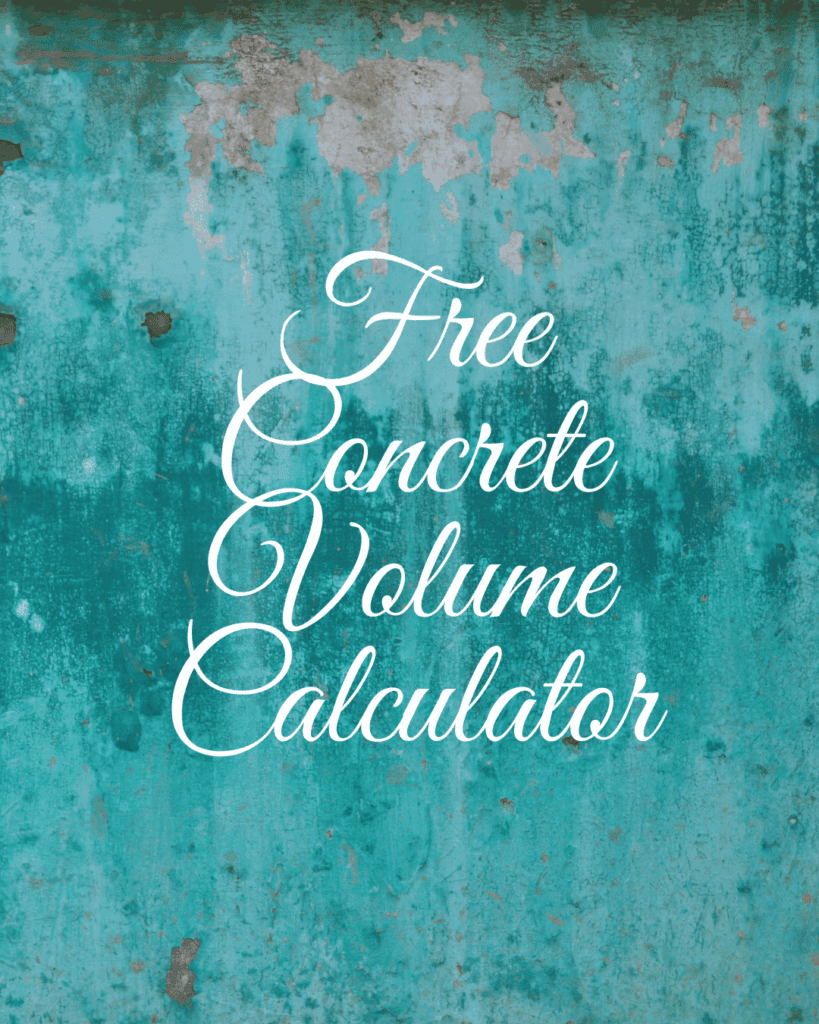Concrete Volume Calculator
Material Cost Inputs
Estimated Cost: $0.00
Step-by-step guide on how to use the Concrete Volume Calculator with PDF Export:
Step 1: Input Material Costs
At the top:
- Cement cost per bag (50kg) – e.g., $8
- Sand cost per m³ – e.g., $40
- Aggregate cost per m³ – e.g., $50
This allows the calculator to estimate material costs accurately.
Step 2: Add a New Shape
Click the “+ Add Item” button to begin.
Each item represents a concrete structure.
Step 3: Choose the Shape Type
From the dropdown, select the shape of the structure:
- Rectangular Slab / Footing – use Length × Width × Height
- Circular Slab – enter Diameter and Thickness
- Trapezoidal Footing – enter Top Width, Bottom Width, Length, and Height
- Column – enter Diameter and Height
Only the relevant fields will be shown for the selected shape.
Step 4: Enter Dimensions
Fill in the dimensions for your chosen shape.
You can also enter the Quantity of that shape to calculate volume for multiples.
Step 5: Repeat for More Shapes (Optional)
Click “+ Add Item” again to include another shape.
Step 6: Click “Calculate”
This will:
- Calculate the total concrete volume in m³
- Estimate the material cost breakdown:
- Cement (in kg and bags)
- Sand (in m³)
- Aggregate (in m³)
- Total cost based on your prices
Step 7: Export / Save
- Click “Print / PDF” to:
- Save the results as a PDF
- Print a copy for use onsite
Step 8: Toggle Dark Mode (Optional)
Click the “Toggle Dark Mode” button to switch to dark theme.
This is saved for your next visit.
How to Use a Free Concrete Volume Calculator
An accurate concrete calculator helps you estimate how many bags or cubic yards of material will be necessary for a project based on dimensions such as slab dimensions, footer depths or wall heights. By doing this, it helps avoid material shortages or overbuying altogether.

Make use of this calculator to estimate how much concrete will be necessary to cover a square or round slab, footer, wall, column, step or curb and gutter project. Take into account settling, loss or spillage when making adjustments to the quantities required.
Calculate the Volume of a Slab
Concrete is the cornerstone of any successful construction project. From building driveways and patios to pouring basement foundations, estimating the exact volume required will ensure you have enough material without either running out or having excess.
To calculate the volume of a concrete slab, begin by taking measurements of its length, width, and depth. Use a concrete calculator for an instant estimate of ready mix concrete required; this tool can help determine exactly how much is necessary even if your project involves irregular shapes or sizes.
Once you’ve determined the volume of concrete required for your slab project, order from your local ready-mix provider. Allow an extra 5-10% buffer in case there are unexpected waste or errors during construction.
Quikrete and CEMEX provide a handy calculator that helps to convert between cubic yards, meters, and feet for conversion purposes. Also essential when it comes to concrete is considering its thickness as this will impact how much material will be required; thicker slabs require additional reinforcements in order to resist warping or bending; lightweight concrete will need less material compared with heavierweight concrete solutions.
Calculate the Volume of a Wall
An effective way of estimating how much concrete you require for your wall is with a concrete calculator. This tool will assist in calculating the appropriate volume of concrete to order, saving both time and money as well as helping avoid shortages or overages of materials.
To use a concrete calculator, enter the length, width, and depth dimensions of your project into its form field and the program will calculate the necessary volume of concrete required. It then converts this figure to cubic yards since that’s typically what concrete sales companies sell in. To get an accurate estimate be sure to add 5-10% extra for margin of error when making estimates – for optimal accuracy this may mean adding between 5-7% extra onto your estimate for more precise estimations.
Concrete is a composite construction material composed of coarse aggregates (particulate materials like gravel, sand, crushed stone and slag), bound together by cement as a binder that hardens over time to form concrete’s final strength. Conventional density ranges between 1900 kg/m3 and 2400 kg/m3, while high-strength concrete may reach 14000 psi in compressive strength.
No matter whether it’s for patio, footings, or foundation construction projects – knowing exactly how much concrete you require can ensure an efficient project from start to finish. By using an online concrete calculator you can save both time and money by avoiding costly errors that arise along the way.
When building a footing, knowing exactly how much concrete you require can be daunting. Our free concrete calculator makes estimating its volume easy: just enter length, width and depth values, and this tool will calculate how many bags of concrete will be required based on those parameters. Alternatively, this can also help determine how much is necessary for other structures such as walls or slabs.
This concrete footing design calculator will assist engineers in designing isolated and combined footings to support different loads, such as uplift, overturning and sliding. Engineers can use structural utility ratios such as shear force capacity ratio or flexure load capacity when creating footing designs.
This tool can also be used to calculate the volume of post hole concrete. Simply input its length, width and depth dimensions and the tool will calculate how much concrete will be required – saving both time and money on costly mistakes caused by ordering too little or too much concrete.
Although this tool provides an accurate estimation of how much concrete mix you will require for your project, it is always advisable to add 5-10% more for spillage or waste. Also remember that most concrete suppliers do not sell fractions of a yard – larger projects may even necessitate truckloads of concrete!
Calculate the Volume of a Column
Concrete columns are structural components designed to transfer the weight of structures above them to structural components below, typically using on-site mixed and poured concrete, although ready-mixed concrete (RMC) may be purchased for larger projects. To make sure there is enough concrete available, a concrete calculator can help determine how much concrete should be needed for each column.

The concrete calculator can be used for various shapes and sizes of concrete projects. Additionally, you can adjust it for different types of concrete – standard concrete is composed of coarse aggregates like sand, crushed stone and gravel bound together by Portland cement but other varieties exist for special purposes. Furthermore, different concrete mixes have differing densities which affect how much is required.
For rectangular and circular slabs, volume calculations can be made using the width times length times height (W x L x H) formula; for columns using radius-based formulae; whereas cylindrical slabs use radius-based calculations. A concrete calculator can also be used to estimate required volume for stairs with run, rise, platform dimensions; depending on your project you may also use it to estimate volumetric estimates of curbs or gutter barriers.
Calculate the Volume of a Curb
Finding the appropriate concrete quantity is integral to successful construction projects, particularly when working with ready mix concrete where its strength and characteristics may vary significantly between batches. To estimate your required volume of concrete accurately, measure its area length-width-depth before using a calculator to ascertain its size.
At first glance, basic concrete calculations may seem straightforward; however, common errors may lead to either under or overestimation of materials needed. Many people confuse volume with amount; a concrete calculator will only give you the approximate volume you require; depending on material type and other factors this figure could differ substantially from actual quantities needed.
For best results, it is wise to double-check measurements using an online concrete calculator and add a small buffer so as to minimize waste and ensure enough material for completion of any job. Doing this will reduce waste while making the entire process run more smoothly – no one wants to find out halfway through their project that they have not ordered enough concrete! To avoid such complications altogether, an online concrete calculator can ensure your measurements are precise and order sufficient material.
Calculate the Volume of a Step
Concrete is an extremely versatile building material used in everything from walls and foundations to pavement and bridges. When planning any project that uses concrete, accurate estimation is critical; ordering too little could result in delays while ordering too much may lead to wasteful overproduction. A volume calculator is an efficient way of avoiding these potential issues and making sure your project runs efficiently from start to finish.
A concrete volume calculator is a handy tool that uses formulas and calculations to help determine how much concrete is necessary for any given construction project. The calculations depend on the structure’s shape and dimensions; e.g. the quantity required for a slab may differ significantly from that required by columns or steps; to accurately determine its volume you must break it into smaller geometric forms and calculate their volumes separately.
To calculate the volume of an individual step, divide each into rectangles and calculate its length x width x height dimensions; this will give you the amount of concrete necessary for that particular step. Once all individual volumes have been calculated for all steps combined together to form the total staircase volume requirement.
When calculating concrete usage, it’s best to add an appropriate buffer. This will minimize wasteful concrete use and ensure there’s enough material available for you to complete your project without running out halfway through.
Related article
